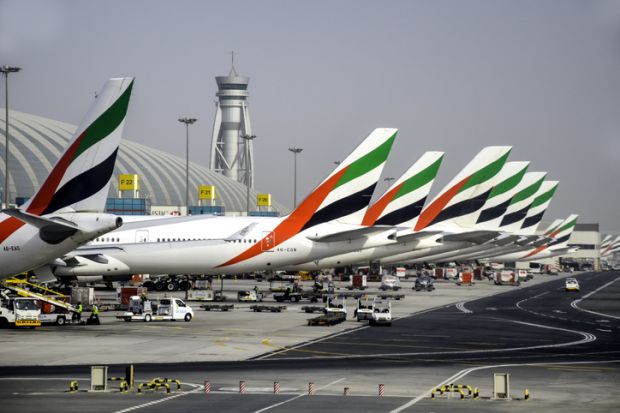Lengthy visa processing times, “skyrocketing” costs and safety concerns are among the reasons why students from the Gulf region are turning away from study in North America and heading to the UK and Australia instead, experts believe.
Latest figures show that 25,770 students from Gulf countries were enrolled in US universities in 2022-23, a 10 per cent drop year-on-year and the lowest level since 2010. There has been a 67 per cent drop in recruitment since the peak of 78,747 in 2015-16 from the same six countries – Bahrain, Kuwait, Oman, Qatar, Saudi Arabia and the United Arab Emirates.
Canada has seen an even sharper decline, dropping from 7,980 students in 2015 to just over 1,100 this year.
Meanwhile, data from admissions service Ucas shows that the number of Gulf students applying to UK universities jumped by 350 per cent between 2010 and 2024. The 7,910 applications for entry this autumn is the largest number on record by some distance.
The number of Gulf students in Australia has fallen slightly from a recent peak but is still running at three times the 2004 tally.
Oxford International Education Group, a pathway provider, noted that visa processing times for Gulf students hoping to study in the US and Canada tended to be longer than those offered by other recruiters, typically spanning several months.
“The UK is closer to the Gulf than the US and Canada and we are perceived to be safer than the US,” said Lil Bremermann-Richard, Oxford International’s chief executive.
“Parents and sponsors feel they can easily visit their children and support them due to that sense of closeness.”
John Calabrese, assistant professor of global and immersive studies at Washington-based American University, agreed that safety concerns were a significant factor, with Middle Eastern families likely to be turned off by media coverage of mass shootings in the US.
More broadly, the US is perceived as being less welcoming to international students from the Middle East and other Muslim-majority countries, said Dr Calabrese.
Campus resource collection: Create welcoming classrooms for international students
“There is undoubtedly a strong current of Islamophobia in America, dating from the 9/11 al-Qaeda attacks and so-called War on Terror. Prospective students and their families are probably concerned at some level about being viewed with suspicion and subjected to being stereotyped,” he said.
Dr Calabrese said that, while tuition fees and living expenses at US colleges have continued to “skyrocket”, the presence of branch campuses such as NYU Abu Dhabi or Georgetown University in Qatar offered a more economical alternative.
“UK universities have, in recent years, not only ‘put out the welcome mat’, but implemented vigorous recruitment campaigns to woo overseas students, including from the [Middle East and North Africa] region.”
Simon Marginson, professor of higher education at the University of Oxford, said it was rare to see such clear-cut trend lines signalling shifts between recruiting countries.
“The neatness of this shift – falls in North American receiver countries replaced by rises in UK and Australia – suggests that agents shifting families and students between countries also have a hand in it,” he said.
“This is possible in student source countries, given how centralised the industry is in some cases, with large numbers of families on the books of individual agents.”




